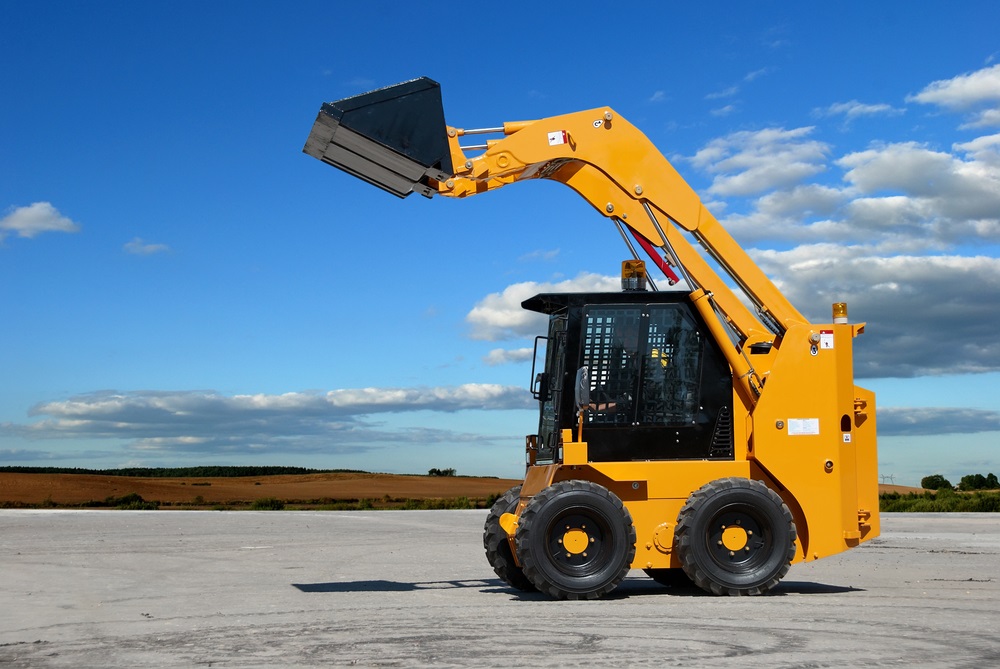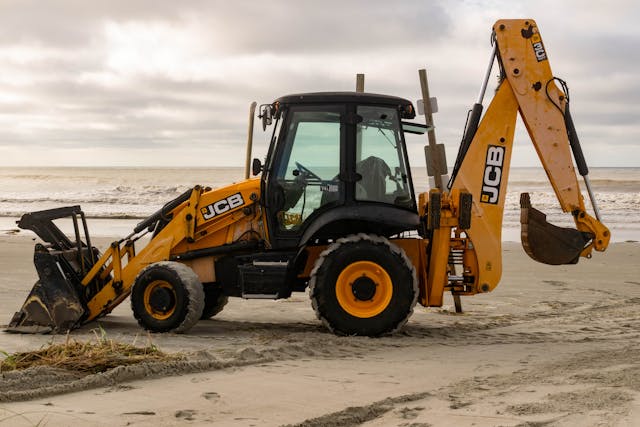Boost Your Productivity: Essential Guide to Skid Steer Loader Fork Attachments
Have you ever thought about how to make your skid steer loader the most powerful? Then, you need to know that the secret lies in fork attachments – Yes, the perfect ones, which can make a huge difference in the efficiency of material handling. Loader fork attachments are the tools that convert your equipment to dealing with the processed materials.
But honestly, if you are moving heavy pallets, working with hay bales, or dealing with construction materials, the right fork attachment can be like your right hand, and the productivity of the work can be increased by more than 10 times. In our great guide, we are going to talk about the following:
- Features of skid steer fork attachments
- How to get the right attachment for a specific job
- Hints and tricks to improve your running costs to a minimum
- Safety checks to carry out for smooth and efficient work
Are you ready for the mission of making your work easy-peasy in the field of material handling? Jump straight in and learn all of the skid steer loader fork attachments’ details and open your machine’s full potential.
Key Takeaways:
- Skid steer pallet forks are supplied by the market that are the most common such as standard duty, adjustable-width, etc that help people in pallet moving and material handling, and each of them got different load capacity and specific usage.
- Whether it is the case of the pallets, hay bales, or construction material, the nature of the work you do determines the kind of skid steer fork attachment to be selected by you.
- The mandatory characteristics for skid steer attachments are the length of the fork tine, the need for hydraulic horsepower best-suited for your machine, and the load capacity for both proficiency and safety.
- Proper maintenance and use of your fork attachment on smooth surfaces are the most important aspects for the durability of your equipment and the safety of your workplace.
- Modern solutions like hydraulic pallet forks make not only the basic tasks simpler, but also the more advanced ones can be completed efficiently and smoothly.
Types of Fork Attachments for Skid Steers
Standard Duty Forks
Standard duty pallet forks are the most convenient and flexible attachments for skid steer loaders. These forks are best suited to unloading the light or medium-duty products, which ordinarily have weights up to 4,000 pounds. They possess a solid frame design and can be reconfigured as to the fork spacing that suits different pallet sizes.
The most common length of fork tines varies from 42 to 48 inches, what enables them to be perfect for most of the standard pallets. These tools are definitely the right ones to be used in the warehouses, the stores, and the lightweight construction work which demands frequent and regular material handling.
Heavy Duty Forks
When you require the additional power of the heavy-duty forks on exceptional cases or situations, then heavy-duty forks are your choice. These robust tools are higher load bearing ones that can hold loads of more than 5,000 pounds. The tines of these tools are actually thicker and angular besides being the frames of the device also it is very sturdy so as to support and lift the more heavy loads.
As compared to standard ones, heavy-duty forks are usually seen in difficult and rough conditions like construction sites, timberyards, and industrial facilities. They are required to withstand the most severe use. This is why heavy-duty forks are typically essential for moving heavy products such as concrete blocks, steel beams, and large debarked trees.
Hydraulic Adjustable Forks
The skid steer fork with the adjustable width is really an incredible move forward in the technology of materials handling. These forks come equipped with hydraulic controls that enable operators to change the distance between tines right from their cabs, which significantly improves the speed of their work, reducing downtimes at the same time.
The new design is of special use in cases where the user has to handle items of different width. The hydraulic option provides for quick, smooth, and hence, energy-efficient running of the forks that are quite adaptable not only for the process of palletizing but also for situations where the shapes of the goods are irregular.
Specialty Forks
The forks that are marked as specialty are the ones that are best suited to work with unique or specific materials as well as to overcome challenges in material handling. To mention just a few, such are the block forks intended for use in masonry, the pipe forks that are dedicated to handling cylindrical objects, and finally, the so-called lumber forks that enjoy longer tines and thus can hold longer items.
There are, however, models, which perform better thanks to additional devices that can take the form of load backrest extensions or the rotating functions. All these tailored goods have been created to ensure safe and highly efficient handling while dealing with non-standard materials or in specific environments.
💡 Key Takeaway: Skid steer fork attachments in the material handling industry range from standard duty to specific options, which are generally used across different fields, offering versatility and safety. Adjustable widths and different tine lengths are the main features for matching specific job requirements.
Applications Across Industries
Construction Sites: At construction places, the use of skid steer loader fork attachments is of a great advantage when it comes to the efficiency of materials handling equipment. These very adaptable items ensure that the whole range of construction materials, from piled-up concrete blocks to packs of timber, are being transferred smoothly and with minimum efforts, that is, from one location to another.
Agricultural Uses: Skid lift fork for agriculture incorporated in the facility is one of the most preferred sources of action in farming. They help to efficiently shift around bales of hay and bags of feed which may at times be very heavy around the farm. The design is built in such a way that it allows one to comfortably lift a bale of hay from the storage areas to the feeding area while having the minimum loss of time and energy of the day-to-day farm operations.
Warehouse Operations: With these accessories, warehouse workers are in a better position to use the skid steers for the forklift purpose. Small-sized dimensions of the attachments guaranteee good access even in the places where there’s least room for the steer, and also such a kind of set-up maintains the required power for the lifting tasks. The adapters take part in a lot of activities, including receiving the goods from the truck are to the spaces for these, they create more productive operations and more secure working environments.
💡 Key Takeaway: Undoubtedly, the relevance of skid steer loader fork attachments is continuously displayed throughout many areas of material handling such as construction, farming, and warehousing. Not only in these areas, but they are also said to be instrumental in propelling effectiveness and productivity at the workplace.
Conclusion
Buying the appropriate skid steer loader fork attachment may change your material handling career instantly. It involves using anything from basic forks to hay forks to replace the pallet equipment. utilization tool flexibility to enhance equipment utilization and task efficiency. Please emphasize safety, obey weight limits, and inspect attachments for maximum performance.
A custom fork attachment may boost efficiency while handling construction equipment or agricultural collections. This is the next level of material-handling. We provide hydraulic pallet fork skid steer fork attachments in different widths. The new trends and concepts may have entirely changed your organization. The newest recommendations and best practices to decrease material handling accidents are here.
FAQs
What is the average life cycle of a skid steer loader fork attachment?
If properly maintained and frequently inspected, skid steer loader fork attachments can be used for 5-7 years. Their lifespan, however, may fluctuate due to usage intensity, local conditions, and maintenance practices. Transmission of regular lubrication and avoidance of overloading can even double their durability.
Are skid steer pallet forks suitable for lifting materials besides pallets?
Yes, skid steer pallet forks are multi-functional and can be used with various materials apart from pallets, such as lumber, pipes, and construction materials. Always, however, make sure that the load weight is within the fork’s capacity and that the material is properly balanced to ensure safe and proper operation.
How can I determine the right length of the fork tine for my skid steer loader?
To select the correct fork tine length, you should consider the size of your usual load and the depth of your pallet. Standard lengths are 42 to 48 inches, but your specific material handling requirements need to be taken into account. Longer tines will enable a better reach; however, it might also reduce the overall weight capacity of the fork.
Are hydraulic pallet forks, in comparison with the standard forks, worth the extra investment?
Hydraulic pallet forks bring along an increase in control and efficiency, particularly in the case of repetitive loading and unloading jobs. Although they cost more at the outset, there can be a substantial increase in productivity and a drastic reduction in the time taken to complete the operation, which is why they are considered suitable for high-volume material handling operations.
What are the precautions one should keep in mind while utilizing fork attachments on uneven terrain?
In order to ensure safety, always keep the surface contact of the vehicle stable, and always keep the loads close to the ground while moving and make sure the weight is distributed correctly. To secure the attachments, use the locking lever, drive slower off-road, and regularly check the hydraulic system for optimal performance
How often should I check for wear and damage of my skid steer fork attachments?
Visual inspections need to be done daily before using the equipment. What to look for are any bents of tines, the wear patterns, and nearby loose parts. Also, do the complete monthly check of all the moving components as well as the hydraulic connections and the mounting brackets. If there are any issues, write them down, and deal with them as soon as possible to ensure safety during operations.





